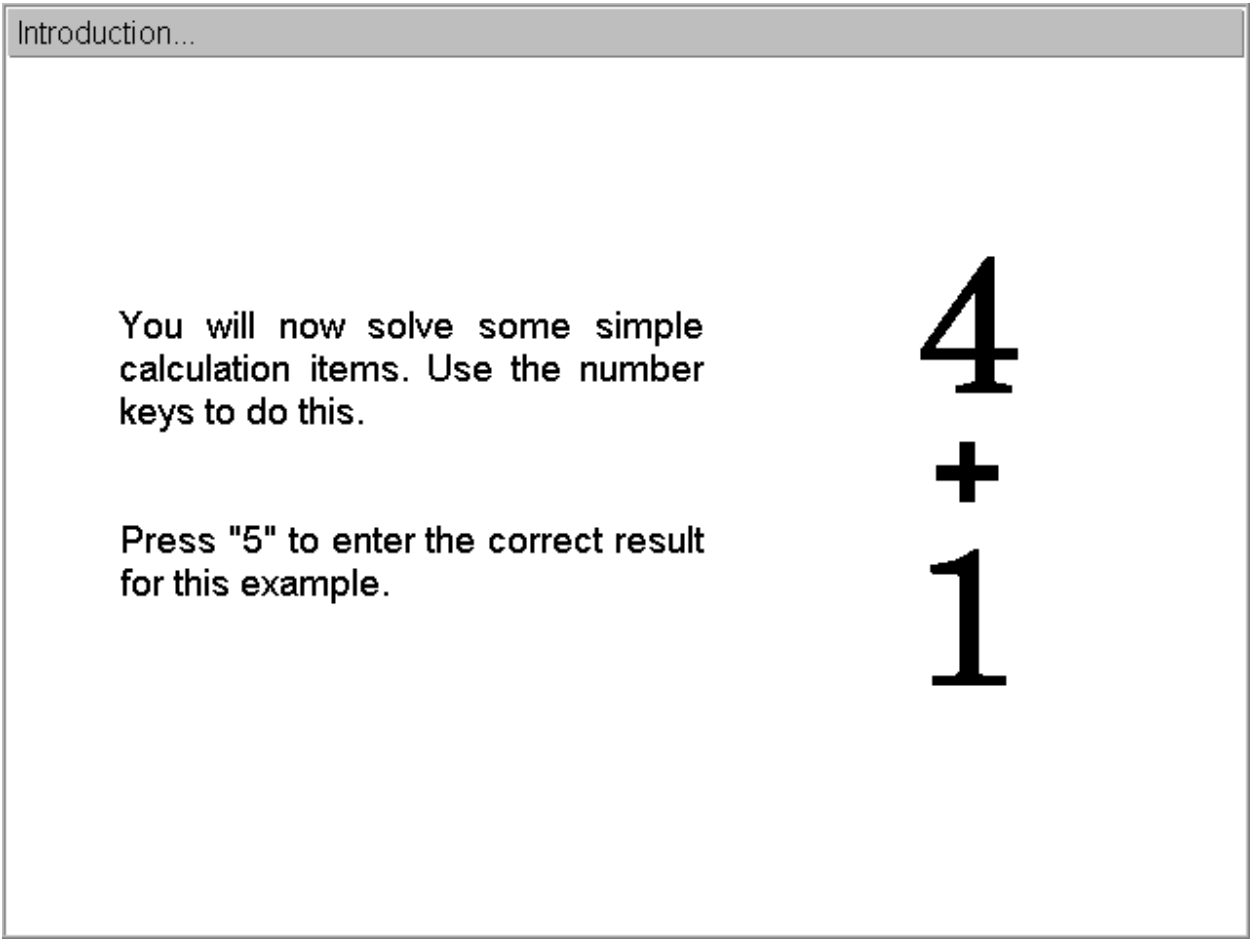ALS

G. Schuhfried © SCHUHFRIED GmbH
Application
Assessment of concentration, mental saturation and fatigue in mental tasks under time pressure (continuous addition tasks as in the Pauli Test, but also more difficult test forms).
Theoretical background
The ALS, an enhanced version of Kraepelin’s work and the Pauli Test, uses the method of continuous addition to assess the respondent’s performance over a period of time: he/she is required to perform repeated addition of two single-digit numbers as fast and accurately as possible over a relatively long period. The test is subdivided into time-based sections (partial intervals); this enables the trend of performance to be evaluated. It is also possible to modify the test by varying the difficulty of the arithmetical problems and by including an additional short-term memory task. This makes it possible to assess aspects of the respondent’s fluid intelligence.
Administration
The respondent’s task is to carry out as many additions or subtractions of two numbers as he can in a prescribed period. The numbers are displayed one above the other on the screen. The respondent enters the results of the calculations via the response panel. In the short term memory task, the lower number moves up and is concealed each time the respondent enters an answer. Thus the respondent needs to memorise the lower number before entering the answer in order to be able to carry out the next task.
Test forms
Three test forms are available. In each case the solutions are always in the range between 1 and 17.
- S1: The sum of an upper and a lower number must be calculated. This form comprises 20 partial intervals of one minute each.
- S2: (with short-term memory component): The sum of an upper and a lower number must be calculated; the task makes demands on short-term memory. This form comprises 20 partial intervals of one minute each.
- S7: Two numbers must be added or subtracted. The computer program prevents the administration of sums that would produce a negative answer. This form comprises 10 partial intervals of one minute each.
Scoring
Items answered as a measure of working speed, Increase in items answered as a measure of the improvement or deterioration in the respondent’s performance, Error percent and Errors as measures of the accuracy of the respondent’s work and the number of corrections. The results of the partial intervals are depicted graphically, illustrating the trend of the respondent’s performance.
Reliability
Our own studies carried out with various samples yield splithalf reliabilities of between r=0.91 and r=0.99 for the variables Items answered and Errors. They are largely similar to the reliabilities obtained for the paper-and-pencil version; for that version test-retest and split-half reliabilities for the variable Items answered lie above rtt=0.95, while for Errors and Corrections values between rtt=0.68 and rtt=0.88 were obtained.
Validity
Tasks of the type used in the Work Performance Series are described in the literature as involving sustained concentration during mental work under time pressure. They also involve personality traits such as resistance to distractions, disturbance and interference, motivation and willpower, and the ability to sustain one’s attention during a particular task.
Norms
For the S1 form a norm sample (N=242) and various special norms (job applicants, job seekers etc.) are available. For the S2 form norms there is an Austrian norm sample (N=280) and norms for job applicants (N=105), job seekers (N=103) and Swedish adults (N=199). For the S7 forms there are representative norms of N=280 respondents and a sample of N=2907 employees.
Time required for the test
Between 15 and 25 minutes (including instruction and practice phase), depending on test form.